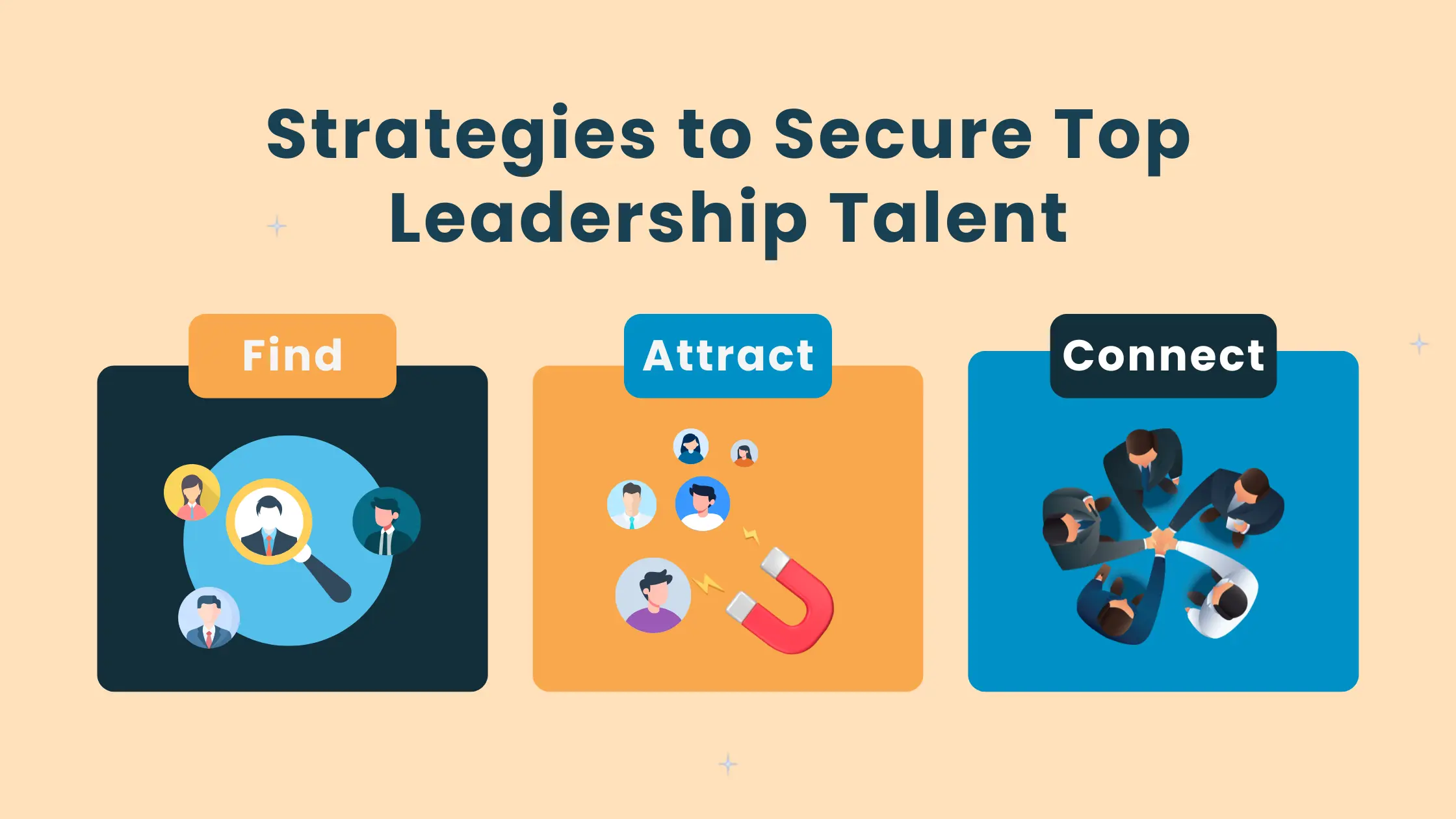TL;DR
- Effective executive sourcing requires strategic, proactive, and data-driven approaches to find top leadership talent.
- Leverage professional networks, LinkedIn, data-driven tools, and industry events to identify and engage potential candidates.
- Build a strong talent pool and use employee recommendations and executive recruitment agencies to enhance sourcing efforts.
- Enhance your employer brand and utilise social media beyond LinkedIn to attract high-calibre leaders.
In today's competitive business environment, sourcing executive talent demands more than conventional recruitment practices. Executive search professionals and internal talent acquisition teams alike must adopt strategic, proactive, and data-driven approaches to identify and engage top-tier leadership candidates.
This blog explores 10 proven executive sourcing strategies designed to elevate your recruitment efforts and help you secure high-performing leaders for your organisation.
Understanding the Foundation of Executive Sourcing Strategies
Effective executive sourcing begins with a deep understanding of the unique requirements of leadership roles and the specific goals of an organisation. It’s not just about finding candidates; it’s about identifying individuals who align with the company’s vision, culture, and long-term objectives. By laying a solid foundation with clear role definitions and targeted research, recruiters can create a strategic roadmap to attract and engage top-tier executive talent.
Top 10 Executive Sourcing Strategies
1. Use Your Connections
Talk to the people you already know in your field, like coworkers and past job candidates. Ask them to recommend people who might be good for your open leadership positions. Tap into their networks and ask for referrals to high-calibre leadership talent. Trusted connections often lead to some of the best hires.
2. Make the Most of LinkedIn
LinkedIn is more than a digital resume database. Use its advanced search filters, join relevant industry groups, and actively engage with potential candidates by commenting on their content or sending thoughtful connection requests. Use LinkedIn to find and connect with qualified leaders. Use the search tools, join groups related to your industry, and interact with the people you want to reach to build connections.
3. Focus on Specific Contacts
Conduct thorough research to identify top talent in your industry, even if they aren't actively seeking a new opportunity. Send them personalised messages that show what makes your company special and why the leadership role is a great opportunity.
4. Use Data-Driven Candidate Search Tools
Tools such as Apollo, Zoominfo, Lusha, and Rocket Reach help find executive candidates by using data. They give you access to a large database of possible candidates. These tools enable recruiters to select candidates based on job title, industry, experience, and other criteria to create targeted lists. These tools provide access to vast, data-rich candidate databases, enabling precise targeting.
5. Go to Industry Gatherings and Conferences
Go to and take part in events, conferences, and networking meetings that are related to your industry. This helps you make connections, show off your brand, and find potential candidates for top positions in a more personal way. These environments allow for organic relationship-building and provide a platform to showcase your company’s leadership opportunities.
6. Use Employee Recommendations
Ask your current employees to suggest qualified candidates from their professional networks. Offer rewards and recognition programs to encourage employees to participate in the recommendation process. Often, great leaders know other great leaders.
7. Create a Strong Talent Pool
Create a strong talent pool by actively building and keeping a list of candidates who have already been checked and are qualified, even if you don't have jobs available right now. Even if no roles are open today, having a list of high-potential individuals ensures faster and more effective hiring when opportunities arise. This will help you quickly find the right people when you need to fill high-level positions.
8. Work with Executive Recruitment Agencies
Think about teaming up with well-known executive recruitment agencies that know a lot about your industry and have access to many qualified candidates who aren't actively looking for a job. They can offer important help and advice during the process of finding and hiring leaders. Consider collaborating with reputable executive recruitment agencies that specialise in your industry.
9. Use Social Media
Besides LinkedIn, look into other social media sites like Twitter, Instagram, and special industry groups to connect with and find potential leaders for your company. Share thought leadership content and company culture stories to attract interest organically.
10. Improve Your Company's Image as an Employer
Focus on creating a strong and attractive employer brand that highlights your company's culture, values, and special advantages of working there. This can help you bring in top talent and make your company a preferred choice for high-level professionals. High-level professionals are drawn to organisations with a clear vision, strong reputation, and an inspiring leadership environment.
Conclusion
Using these 10 executive sourcing strategies for finding executive talent, you'll be ready to find, connect with, and hire the best candidates for your leadership roles. Also, consider using the best executive search software to make your hiring process smoother and more efficient and unleash the potential of recruitment through our Advanced Guide to Executive Search.
FAQs - Frequently Asked Questions
1. What’s the best way to start sourcing executive talent?
Begin by tapping into your existing network of colleagues, past candidates, and industry contacts. These trusted sources can often refer high-quality leaders who aren’t actively job hunting but may be open to the right opportunity.
2. How do I approach passive executive candidates effectively?
Research them thoroughly and craft personalised messages that highlight why your company stands out. Focus on what makes the leadership role strategic and impactful, and how it aligns with their career goals.
3. Are executive search firms really necessary?
While not always required, search firms are valuable for senior roles that demand confidentiality, niche expertise, or access to hard-to-reach candidates. They bring industry insights, vetting processes, and strong candidate networks.
4. How does employer branding impact executive sourcing?
Executives care deeply about company culture, leadership vision, and long-term growth. A strong employer brand builds trust and makes your organisation more attractive to top-tier leaders, even before you reach out.
5. Can social media platforms beyond LinkedIn help in executive sourcing?
Yes. Platforms like Twitter (X), Instagram, and industry-specific communities allow you to engage with thought leaders, share your company’s story, and connect with potential candidates in a more authentic, informal way.









.webp.dat)



.webp)

